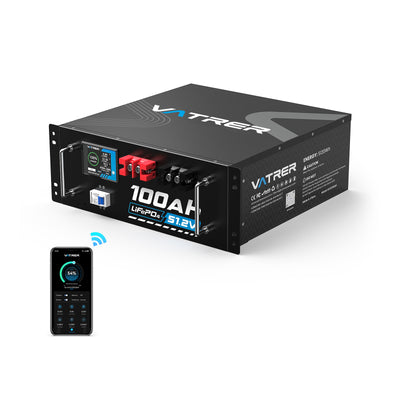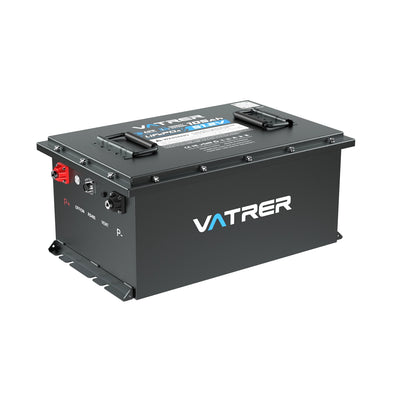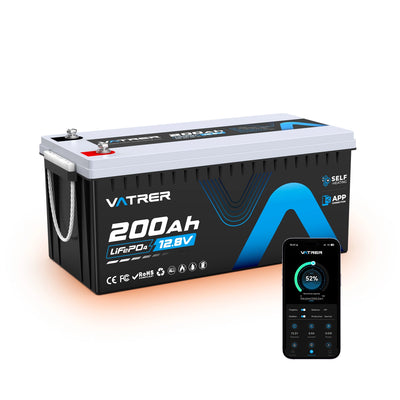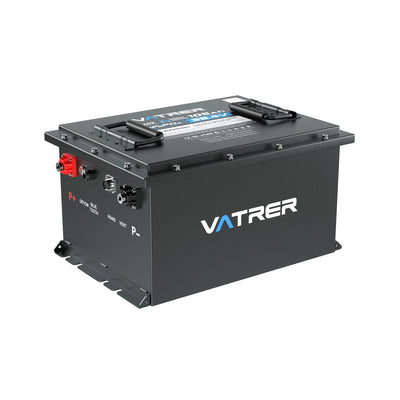
Where To Buy Golf Cart Batteries
If your golf cart begins to lose its charge more quickly than normal or the battery takes noticeably longer to refill, it usually indicates that a replacement is due. Understanding where to purchase golf cart batteries and which type best fits your vehicle is essential for dependable performance and long-term value.
This guide explains everything you should know — from battery categories and buying channels to installation reminders and upgrade considerations.

Why Understanding Where to Buy Golf Cart Batteries Matters
Your golf cart’s battery is more than a simple part — it is the central energy source that keeps the vehicle moving. Whether your cart is used for commuting, golfing, or utility purposes, selecting the right supplier influences more than cost. It affects reliability, battery lifespan, and overall confidence during use.
Today’s buyers can choose from local suppliers, national retailers, and online platforms. Still, not every seller provides the same quality or compatibility assurance. Below we outline where to source dependable golf cart batteries near you and what to verify before placing an order — particularly important for anyone moving to lithium solutions.
Understanding the Function of a Golf Cart Battery
The golf cart battery acts as the main electrical system, converting stored energy into propulsion and powering onboard lighting, controllers, and accessories. Its voltage and capacity dictate how far your cart can travel per charge and how consistently it performs.
| Battery Voltage | Common Use Case | Typical Range | Average Runtime |
|---|---|---|---|
| 36V | Older models, light-duty driving | 20–25 miles | 3–4 hours |
| 48V | Modern carts, greater power demand | 30–50 miles | 5–6 hours |
| 72V | High-torque or lifted performance carts | 50+ miles | 6–8 hours |
Tip: If your vehicle feels weak on hills or accelerates poorly, the cause may be declining battery efficiency rather than a mechanical problem.
Types of Golf Cart Batteries and How to Choose
Golf cart batteries differ in construction, maintenance requirements, and lifespan. Understanding these distinctions helps you choose a model that suits your driving habits, maintenance expectations, and budget.
| Type | Lifespan | Maintenance | Weight | Charging Time | Cost Range |
|---|---|---|---|---|---|
| Flooded Lead-Acid | 3–5 years | High | Heavy | 8–10 hrs | $600–$900 |
| AGM | 4–6 years | Low | Moderate | 6–8 hrs | $800–$1,000 |
| Gel | 5–7 years | Low | Moderate | 8–9 hrs | $900–$1,100 |
| Lithium (LiFePO4) | 8–10+ years | None | Light | 4–5 hrs | $1,200–$2,000 |
Tip: Although a lithium golf cart battery requires a higher initial investment, reduced upkeep and longer service life make it a highly economical choice.
Flooded Lead-Acid (FLA)
- A long-standing and budget-friendly option.
- Requires ongoing maintenance such as adding water and cleaning terminals.
- Typical lifespan of 3–5 years.
- Heavy, slower to recharge, and sensitive to temperature extremes.
AGM (Absorbent Glass Mat) Lead-Acid
- Sealed construction eliminates the need for watering.
- More resilient than traditional flooded batteries, with better resistance to vibration.
- Higher price but improved reliability.
Gel Lead-Acid
- Gel-based electrolyte reduces leakage and handles heat and cold well.
- More expensive and slower to charge than AGM units.
Lithium (LiFePO4) Batteries
- Lightweight and fully maintenance-free.
- Recharges substantially quicker than lead-acid models.
- Capable of more than 4,000 charge cycles.
- Includes a built-in BMS and temperature protections to maintain safety.
- Ideal for long-range use, rapid charging, and stable power output.
Where to Buy Golf Cart Batteries: Local and Online Choices
When searching for golf cart batteries near me, you will find several purchasing routes depending on your budget, support needs, and preferred buying style. Below are the four main categories where European and UK customers commonly obtain their new or replacement batteries.
| Channel | Ideal For | Key Advantages | Key Limitations |
|---|---|---|---|
| Local Dealers | Buyers wanting face-to-face service | Installation, local warranty | Higher pricing |
| Retail Chains | Cost-sensitive customers | Accessible, low prices | Limited lithium availability |
| Online Marketplaces | Self-installers | Large variety, customer ratings | Warranty varies by seller |
| Brand Websites | Buyers planning to upgrade | Verified products, strong support | Delivery waiting time |
a. Local Golf Cart Dealers or Workshops
Best for owners who prefer personalised advice, on-site installation, and dependable warranty handling.
Pros
- Technicians can test your battery and suggest the correct replacement.
- Installation and wiring are professionally completed.
- Some dealers provide trade-in incentives.
Cons
- Prices generally sit 10–15% higher due to labour costs.
- Limited range of brands in stock.
Examples
- Golf Cart King (Texas)
- Battery Source (Florida/Georgia)
- Batteries Plus Bulbs (nationwide)
b. Retail Chains
Suitable for buyers looking for affordable lead-acid batteries and convenient pickup.
Pros
- Attractive pricing with broad availability.
- Good for standard flooded or AGM batteries.
- Returns and warranty processed through the store.
Cons
- Limited selection of lithium models.
- Staff may not be specialised in golf cart electrics.
Examples
- Walmart Automotive Center
- Sam's Club
- Costco
C. Online Marketplaces
Ideal for buyers who want to compare models quickly or find rare sizes.
Pros
- Extensive choice across different manufacturers.
- Ability to compare specs and browse customer reviews.
- Delivery straight to your door.
Cons
- Authenticity and warranty terms may differ by seller.
- Potential for refurbished or unofficial stock.
Examples
- Amazon
- eBay
Tips: Always verify the “ships from and sold by” details to ensure genuine sellers.
d. Brand Official Websites (Recommended)
Best for users upgrading to lithium batteries or those who require full assurance of specifications and warranty.
Pros
- Guaranteed genuine products directly from the manufacturer.
- Access to technical guides and installation instructions.
- Reliable warranty and after-sales support.
- Latest certified production runs (UL, CE, UN38.3).
Cons
- Orders are typically shipped, though some brands offer local pickup.
Examples
- Vatrer Battery offers 36V, 48V, and 72V LiFePo4 golf cart battery conversion kits with options such as Bluetooth monitoring and fast charging. Warehouses located across several regions allow quicker collection and reduced wait times.
- Trojan Battery provides a recognised range of deep-cycle lead-acid batteries.
Why Choosing a Brand Website Is Often the Better Option
Purchasing directly from a manufacturer ensures validated specifications, proper certifications, and warranty coverage. Brands like Vatrer Battery supply:
- Comprehensive product data and compatibility resources.
- Technical assistance for installation and maintenance.
- Certified chargers and accessories.
- App features or firmware support for Bluetooth and BMS monitoring.
Direct purchasing also removes third-party handling, ensuring fresher stock and safer logistics.
What to Check Before Replacing Your Golf Cart Battery
Preparing correctly for battery replacement helps prevent damage and ensures a safe installation.
Checklist
- Disconnect all electrical power before starting.
- Wear appropriate gloves and protective eyewear.
- Label all cables to maintain correct polarity.
- Clean any corrosion on terminals before fitting the new battery.
- Inspect mounting brackets for structural issues.
- Use a charger compatible with the new battery chemistry.
Tips
- Do not combine old and new batteries in the same system.
- Recycle old lead-acid units responsibly — most sellers offer return programmes.
What to Consider When Upgrading to a Lithium Battery
Switching to lithium power brings significant improvements but requires proper planning.
- Voltage Compatibility: Match your system (36V, 48V, 72V) to the lithium pack.
- Charger Requirements: Lithium batteries need dedicated LiFePO4 chargers.
- BMS Functionality: Ensures safe charging and discharging.
- Weight Shift: Lithium packs are much lighter; some carts may need weight balancing.
- Performance Benefits: Faster charging, stronger torque, and improved range.
A Vatrer 48V 105Ah lithium battery can provide up to 50 miles of driving per charge and typically lasts 10 years with minimal maintenance.
Conclusion
Purchasing the right golf cart battery is not just about finding the lowest price — it is about ensuring dependable performance, safety, and long-term durability. Local retailers offer convenience, while official brand websites provide verified specifications and stronger support.
If you are preparing to switch to lithium, consider the range from Vatrer Battery. Their LiFePO4 solutions deliver 4,000+ cycles, integrated protection systems, and Bluetooth monitoring — providing steady power throughout every season and every journey.
Final Tip: Before purchasing, confirm the cart’s voltage, measure your battery compartment, and compare lithium options carefully. Making an informed decision today helps ensure smoother rides and fewer replacements in the years ahead.
Share



















































